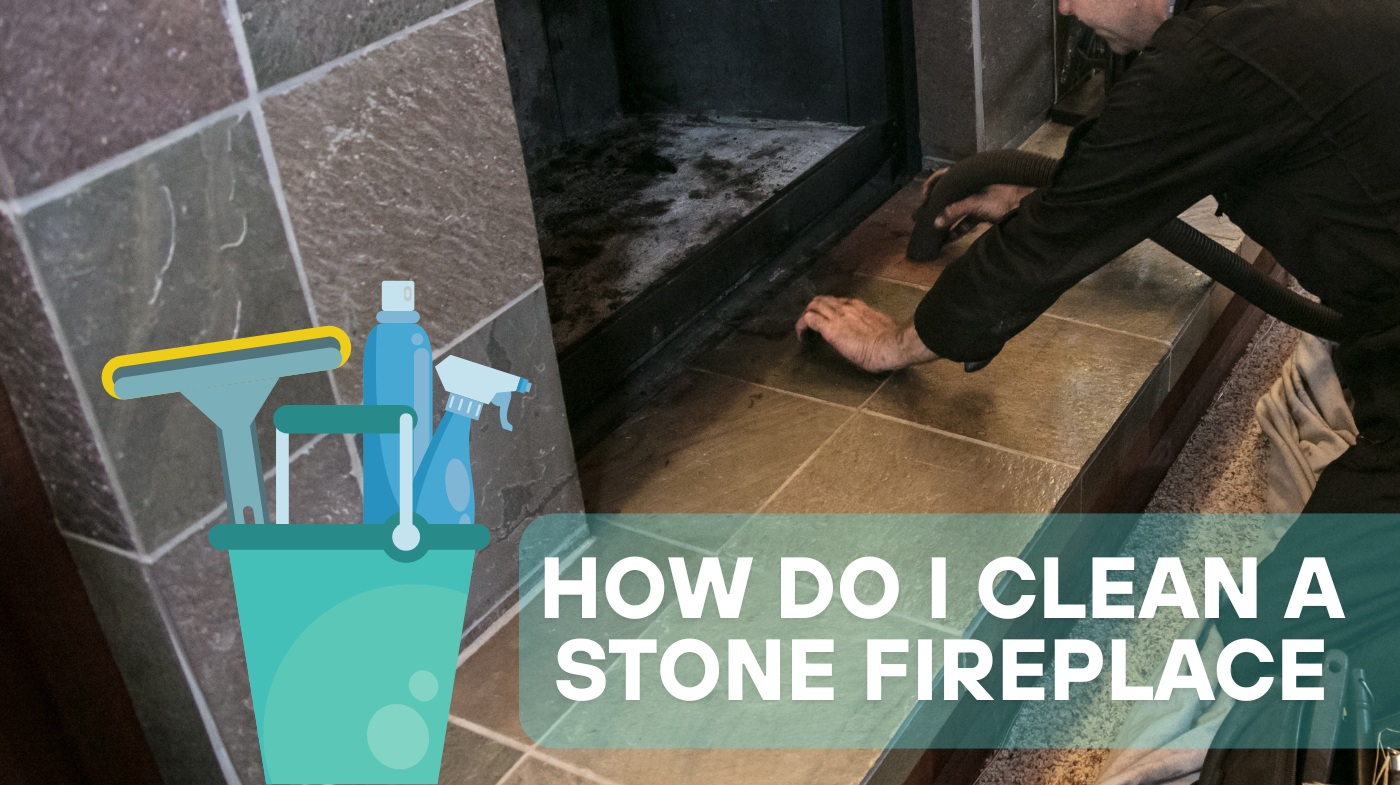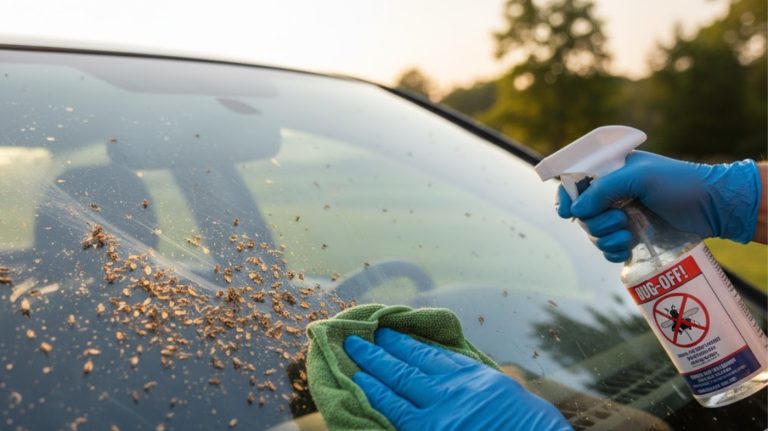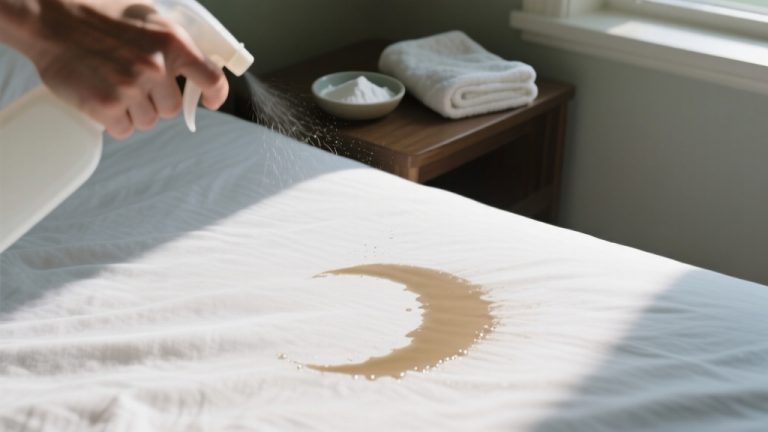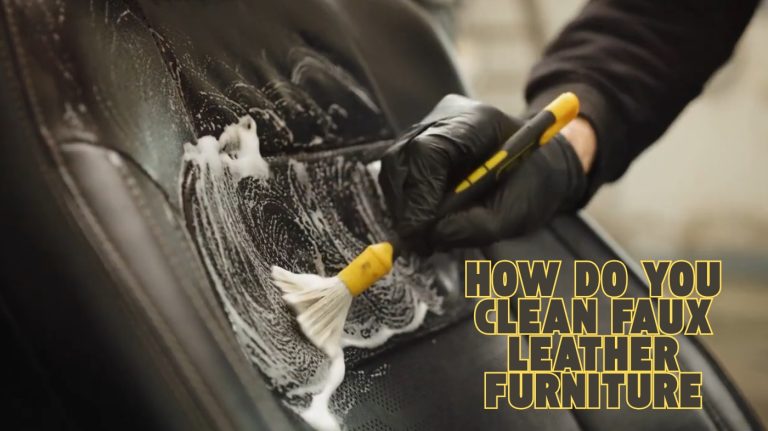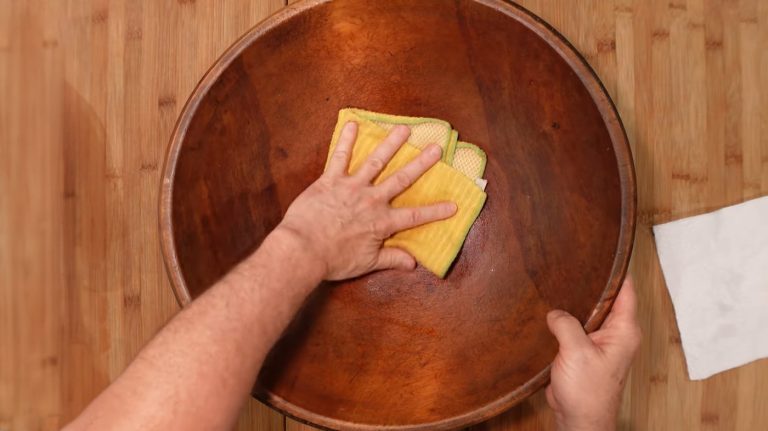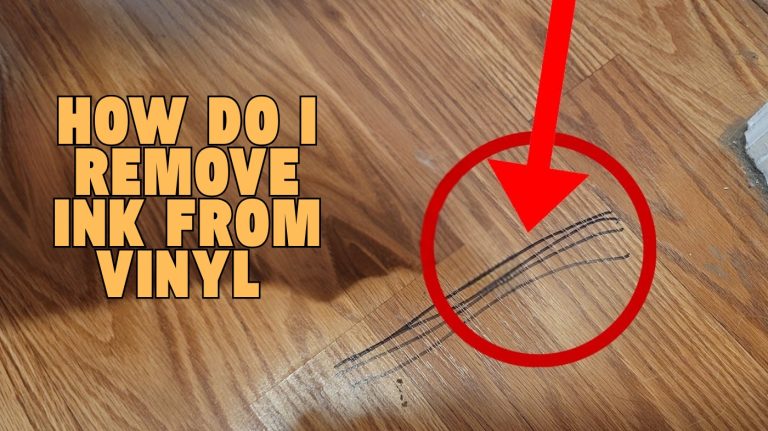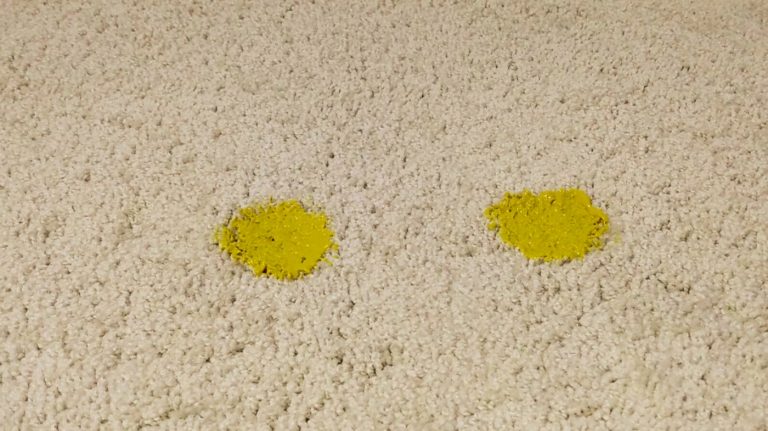How Do I Clean a Stone Fireplace? Easy Tips That Work
To clean your stone fireplace, start by ensuring it’s completely cool and cover nearby floors with drop cloths. Remove ashes and dust with a brush or vacuum, then dampen the stone slightly with warm water.
Use a mild, pH-neutral cleaner or soapy water and gently scrub with a soft brush. Avoid acidic products like vinegar, and rinse thoroughly to prevent damage.
Finish by drying with a microfiber cloth and ventilating the area well. If you want to master stain removal and maintain your fireplace longer, keep exploring effective techniques.
Key Takeaways
- Ensure the fireplace is cool and protect surrounding areas with drop cloths before cleaning.
- Use a pH-neutral, stone-safe cleaner like diluted mild soap or ammonia, avoiding acidic products.
- Remove loose dust and soot gently with a soft-bristle brush and vacuum with a HEPA filter.
- Clean stains with mild soap and water or a pumice-ammonia paste, rinsing and drying thoroughly.
- Apply a protective stone sealant annually and maintain regular dusting to preserve the fireplace surface.
Preparing the Stone Fireplace for Cleaning
Before you begin cleaning your stone fireplace, make sure it’s completely cool to avoid injury and damage. Start by removing all ashes and debris from the firebox to access the stone surfaces clearly.
Use a vacuum or brush to clear dust and loose particles from the stone and surrounding area. Regular cleaning is essential to prevent soot stains from becoming difficult to remove.
Protect nearby flooring and furniture with drop cloths or plastic sheeting to catch dust and cleaning drips. Seal any gaps or cracks around the fireplace to prevent drafts and prepare for deeper cleaning.
Next, scrape stone surfaces with a wire or drill-attached brush to dislodge moss, soot, and debris in crevices.
Focus on grout lines and grooves, then vacuum thoroughly using a crevice attachment. Repeat brushing in stubborn areas until most debris is removed.
Selecting Appropriate Cleaning Solutions
When selecting cleaning solutions for your stone fireplace, you’ll want to choose products that protect the stone’s natural integrity while effectively removing dirt and stains.
Start with mild options like diluted ammonia or mild soap with warm water to avoid damage. It is essential to identify if the stone is calcareous or siliceous to determine the appropriate cleaning products and methods.
Using pH-balanced cleaners will help prevent etching and damage to the stone surface. For tougher soot, baking soda paste works well without harsh chemicals. Avoid acidic cleaners like vinegar, which can corrode stone.
Consider these key points:
- Identify your stone type before choosing a cleaner, as some require specialty products with neutral pH to prevent etching.
- Always dilute chemicals properly and test solutions on a small area first to avoid discoloration.
- Use eco-friendly cleaners when possible and follow safety precautions, including gloves and ventilation.
Tools Needed for Cleaning Stone Fireplaces
Choosing the right cleaning solutions is just one part of maintaining your stone fireplace; having the proper tools makes the process more efficient and safe.
You’ll need basic handheld tools like a fireplace poker for handling embers, an ash shovel, and a coal hod shovel with a sturdy steel body to scoop ash and debris.
Use a stiff-bristled brush designed for stone to scrub without damage. For chimney areas, long wire brushes and smoke chamber brushes target hard-to-reach soot.
Don’t forget safety gear: protective gloves and goggles are essential during abrasive cleaning. Ash containers with double bottoms and wooden handles help you store and transport ash safely.
For more intensive maintenance, specialized power tools and chimney cleaning systems are available, but these basics cover most routine cleaning tasks effectively.
Additionally, fireplace and hearth gloves provide heavy-duty protection, ensuring your hands are safe while cleaning and handling hot materials. It is also important to ensure proper ventilation during cleaning to reduce the risk of fire hazards and exposure to harmful dust.
Techniques for Removing Loose Debris and Dust
Although removing loose debris and dust may seem straightforward, following careful steps guarantees you protect both your stone fireplace and surrounding area.
Start by preparing the space: place a tarp around the base, secure edges with tape, and remove nearby objects to minimize contamination from airborne particles during cleaning.
Preparing your space carefully protects both your stone fireplace and surrounding area during cleaning.
Next, tackle loose ash and debris.
- Sweep the hearth and firebox floor with a broom and dustpan, using damp coffee grounds to minimize airborne dust.
- Lightly mist the stone surface with warm water to dampen dust without saturating the stone.
- Use a soft-bristle brush to loosen remaining dust, working top to bottom, then wipe with a damp microfiber cloth to capture residual particles. Regular cleaning maintains the fireplace’s functionality and longevity and reduces buildup that could impair performance.
This method ensures thorough dust removal while preserving your stone’s integrity and keeping your space clean.
For deeper cleaning, consider using biodegradable degreasers to safely remove stubborn grime without harming the stone or environment.
Methods to Eliminate Soot and Stubborn Stains
Since soot and stubborn stains can deeply embed in stone surfaces, tackling them requires specific cleaning methods tailored to their severity and your fireplace’s material.
For light soot, mix up to 1/4 cup dish soap in a gallon of hot water, scrub gently from top to bottom, and avoid excess moisture.
Always wear protective eyewear and gloves to ensure safety during cleaning. Blot the surface with clean, white cloths to prevent spreading the soot further and to absorb loosened particles effectively.
Heavier soot calls for trisodium phosphate (TSP) mixed with hot water—wear protective gear and rinse thoroughly after scrubbing. Using a commercial degreaser can also help break down stubborn grime on stone surfaces.
For porous stone with tough stains, a pumice-ammonia paste works well, but use it in a ventilated area and rinse completely.
Commercial degreasers and nylon brushes help remove grime, while wire wheels lubricated with water can speed up cleaning on very aged soot. Always protect surrounding areas to prevent further mess.
Using Sandpaper for Deep-Set Discolorations
When tackling deep-set discolorations on your stone fireplace, using sandpaper can be an effective method if applied carefully.
Start by selecting fine- to medium-grit sandpaper (80- to 120-grit) suited for your stone type to avoid damage. This technique is especially useful for removing stubborn stains that regular cleaning cannot eliminate.
Before sanding, remove loose dust and protect surrounding areas. Use light, circular motions with gentle pressure, sanding in small sections to prevent unevenness.
- Test the sandpaper on a hidden spot to check compatibility.
- Sand gently, avoiding prolonged focus on one area.
- Vacuum frequently to clear dust and monitor progress.
Rinsing and Drying the Stone Surface Properly
To guarantee your stone fireplace stays in great condition, you need to rinse and dry the surface properly after cleaning. Start by applying clean, cold water gradually from top to bottom to remove soap residue without damaging the stone.
Use a soaked rag or sponge for even rinsing, avoiding high water pressure that can erode stone or grout. Make sure all soap suds and dirt are fully washed away to prevent streaks. Using the right cleaning agents is important to avoid surface damage.
Once rinsed, dry the stone with a clean microfiber cloth to prevent water marks, then allow it to air dry completely. It is important to never allow cleaning solutions to dry on the stone to avoid damage.
Ensure good ventilation or use fans to speed drying but avoid direct heat sources that could crack the stone. Check for damp spots afterward and re-wipe if needed to maintain uniform dryness.
Ongoing Maintenance to Keep Stone Fireplaces Clean
To keep your stone fireplace looking its best, make regular dusting part of your routine to prevent dirt buildup. Shield the base with a rag or sheet to catch falling dirt during dusting, ensuring a cleaner process.
Don’t forget to apply a protective sealant annually to shield the stone from stains and moisture. Using a limestone sealer for long-term protection helps maintain the stone’s natural look.
Applying a high-quality sealant specifically designed for stone surfaces enhances durability and stain resistance.
When you notice small spots or spills, tackle them quickly with appropriate cleaners to avoid stubborn stains. Promptly cleaning up spills prevents staining and damage, preserving your fireplace’s appearance.
Regular Dusting Routine
Although stone fireplaces are durable, they still require regular dusting to keep their surfaces clean and vibrant. Weekly dust removal prevents soot buildup and preserves your fireplace’s natural beauty. Here’s how to maintain it effectively:
- Use a soft microfiber cloth or a non-abrasive vacuum attachment to gently remove dust from all visible surfaces and crevices.
- Dust from top to bottom with light circular motions, avoiding harsh wiping to prevent embedding dirt in the stone’s pores. This method is similar to using a soft microfiber cloth recommended for delicate surfaces like unlacquered brass.
- Promptly blot any spills with a soft cloth to avoid stains and always dry the stone thoroughly to prevent moisture damage. Regular dusting with mild liquid detergent and a soft brush can help maintain the stone’s condition over time.
Consistent weekly dusting reduces deep cleaning needs, maintains structural integrity, and enhances your fireplace’s appearance.
Protective Sealant Application
How can you guarantee your stone fireplace stays protected and looking its best over time? Applying a protective sealant is key.
Choose a breathable, penetrating sealant formulated for natural stone and labeled fireplace-safe to resist heat and moisture. Ensure the stone surface is completely dry and clean before application to maximize sealant effectiveness.
Before application, cover floors and tape off adjacent surfaces. Clean and dry the stone thoroughly, then test the sealant on a small hidden spot. It is important to select a sealant suitable for quartzite if your fireplace stone is quartzite to prevent damage.
Use a foam applicator or soft brush to apply a thin, even coat, working in sections. Wipe away excess to avoid streaks. Allow the sealant to penetrate for 15-30 minutes, then buff gently with a dry cloth. Let it cure fully before using the fireplace.
Reapply as recommended to maintain lasting protection. Avoid over- or under-application and always follow manufacturer instructions carefully.
Quick Spot Cleaning
When should you tackle spot cleaning on your stone fireplace? Immediately after noticing soot or stains to prevent permanent absorption into the porous stone. Quick attention keeps your fireplace looking pristine and avoids buildup.
Here’s how to manage spot cleaning effectively:
- Dampen the affected area with water before applying a mild soap solution or a suitable stone cleaner to loosen dirt without grinding it deeper. Using a simple scrub brush can significantly enhance cleaning effectiveness without damaging the stone. For tougher stains, using non-toxic alternatives is recommended to protect the stone surface.
- Gently scrub with a soft bristle or nylon brush, avoiding abrasive tools that could damage the stone.
- Rinse thoroughly with water and wipe dry to eliminate residue and prevent moisture damage.
Perform quick spot cleanings regularly during heavy use seasons to maintain your fireplace’s appearance and reduce the need for deep cleaning later.
Safety Precautions When Cleaning Stone Fireplaces
Before you start cleaning, make sure you wear protective gear like gloves, masks, and eye protection to guard against dust and chemicals.
Use only mild, pH-neutral cleaners designed for stone, and always test them on a small area first to avoid damage. Keep the area well-ventilated and dispose of ashes and waste safely to prevent fire hazards and health risks.
Additionally, ensure the fireplace and chimney have been inspected for any structural integrity issues before beginning cleaning to maintain safety.
It is also important to use protective gear to prevent skin and eye irritation during the cleaning process.
Protective Gear Essentials
Although cleaning a stone fireplace can be rewarding, you’ll need the right protective gear to keep yourself safe from dust, soot, and harsh chemicals. Equip yourself properly to minimize health risks and avoid contamination.
- Eye and Respiratory Protection: Wear snug-fitting safety goggles to shield your eyes from debris and consider an N95 mask or respirator to filter dust and fumes effectively. It is important to wear a protective mask to prevent inhaling soot and debris, which can be harmful to your respiratory system.
- Hand Protection: Use rubber or nitrile gloves that fit well and inspect them for damage before starting. Opt for thicker gloves when handling stronger cleaners.
- Clothing and Area Protection: Don long sleeves and pants to protect your skin, and cover floors or nearby furniture with tarps to catch soot and drips. Additionally, using a dropcloth or plastic tarp helps protect floors and furniture from soot and debris during cleaning.
Chemical Safety Guidelines
Since stone fireplaces require gentle care, you must choose cleaning chemicals carefully to protect their surfaces.
Use only pH-neutral or mildly alkaline cleaners designed for natural stone, avoiding acidic or harsh agents like vinegar, bleach, or ammonia that can etch or discolor.
Always test new products on a hidden spot first. Follow manufacturer instructions precisely for dilution and apply solutions with soft cloths or brushes, keeping sprays 6–8 inches away to prevent over-saturation.
Wipe off residue promptly to avoid prolonged chemical exposure that can degrade sealants or stone integrity. It is also important to read labels on fireplace cleaners and sprays to ensure they are safe for use on stone surfaces.
Wear gloves and eye protection to guard against irritation. Store chemicals safely, never mix them, and use them in well-ventilated areas to minimize inhalation risks.
Ventilation and Disposal
Choosing the right cleaning products is just one part of protecting your stone fireplace. Proper ventilation and safe disposal are vital to avoid health risks and maintain indoor air quality.
Before cleaning, open multiple windows and use fans to create cross-ventilation, preventing fume buildup. It is also important to wear protective gloves to safeguard your skin from harsh cleaning agents.
Remove or cover nearby furniture and electronics to protect them from dust and moisture. After cleaning, continue ventilating for several hours to dissipate residual fumes.
For disposal, follow these steps:
- Collect soot and debris with soft brushes and a HEPA-filter vacuum to minimize airborne particles.
- Use disposable cloths for wiping and seal them in bags to contain contaminants.
- Avoid rinsing soot down drains to prevent clogging; instead, wipe with damp cloths.
Frequently Asked Questions
Can I Use a Pressure Washer on My Stone Fireplace?
You shouldn’t use a pressure washer on your stone fireplace because the high pressure can damage the stone and mortar, causing erosion and cracks. Instead, opt for gentler cleaning methods like soft brushes and mild stone-safe cleaners.
If you must use a pressure washer, keep the pressure low, maintain at least 18 inches distance, and test on a small area first. This way, you’ll protect your fireplace’s appearance and structure.
How Often Should I Reseal a Stone Fireplace?
You don’t want to wait forever to reseal your stone fireplace—it’s like leaving your car without oil! Typically, reseal every 3 to 5 years if you use penetrating sealers, or every 1 to 3 years for topical ones.
Check yearly for signs like moisture absorption or dullness. Heavy use, harsh weather, or cleaning can speed things up.
Stay proactive by inspecting and resealing before damage shows to keep your stone looking great and protected.
Are There Natural Alternatives to Chemical Cleaners for Stone?
Yes, you can use natural alternatives to chemical cleaners for stone. Try mixing mild dish detergent with warm water or combine detergent, salt, and water for a homemade cleanser.
Baking soda paste works well for soot and stains, while a flour and hydrogen peroxide poultice lifts tough marks on porous stones.
Use soft brushes, clean thoroughly, and avoid acidic or harsh chemicals to keep your stone safe and looking great.
What Should I Do if My Stone Fireplace Develops Mold?
Mold on your stone fireplace is both a sign of moisture problems and a call for action. You should first wear gloves and a mask, then gently scrub the mold with a baking soda paste or a diluted bleach solution. Rinse thoroughly and guarantee proper ventilation afterward.
Don’t forget to fix leaks and consider sealing the stone to prevent recurrence. If mold persists extensively, calling a professional is the safest bet.
Can Cleaning Damage the Mortar Between Stones?
Yes, cleaning can damage the mortar between stones if you’re not careful. Using harsh chemicals, abrasive brushes, or excessive water can erode or weaken the mortar joints, causing cracks, crumbling, or even loose stones.
To protect the mortar, you should use gentle brushes, mild cleaners, and avoid soaking the mortar. Always let it dry thoroughly and consider sealing it to prevent moisture damage and maintain the fireplace’s structural integrity.
Let Your Stone Fireplace Shine for Years to Come
By giving your stone fireplace a gentle spa day, you’ll breathe new life into its natural beauty. With the right tools and cleaning solutions, you can sweep away dust and soot like a fresh breeze clearing the air.
Remember to treat stubborn stains with patience and care, and always rinse thoroughly to let the stone’s true colors shine. Keep up with regular maintenance, and your fireplace will stay a warm, inviting centerpiece for years.

